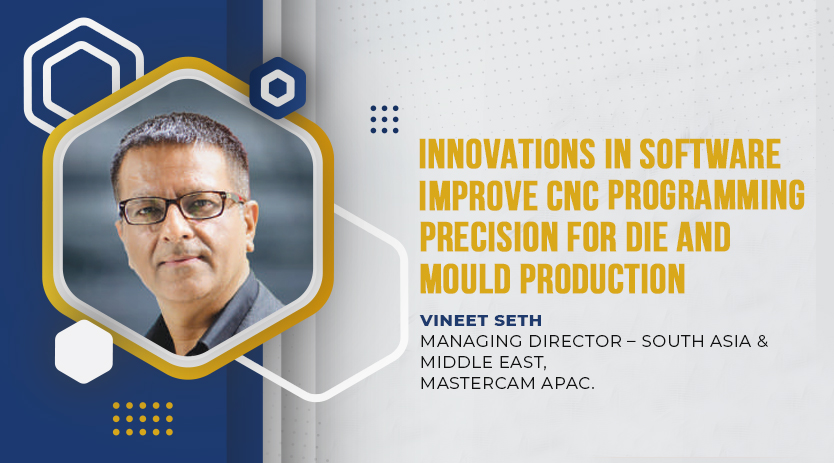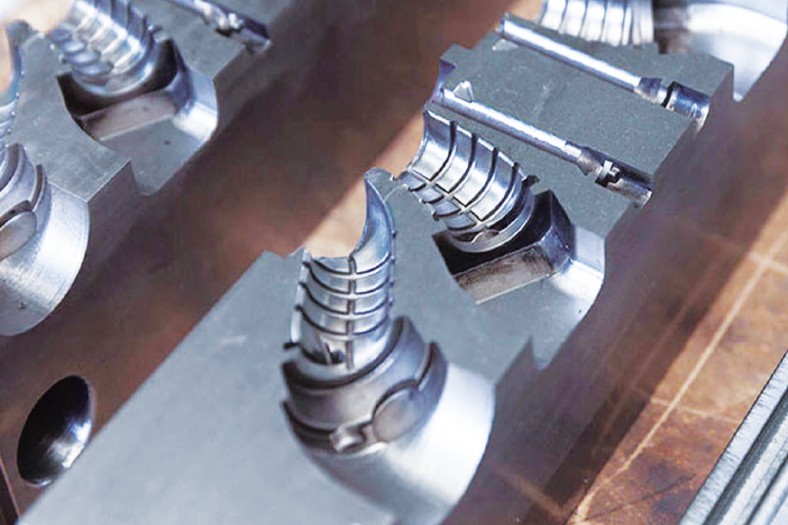Die and Mould automation prospects and trends
October 12, 2021 2:06 pm
Industry experts share their views about the die & mould industry and also about skilled D&M manpower availability which is a challenge to many tool making companies.
The pandemic has interrupted manufacturing due to lockdown limitations imposed on major sectors. Without the right tools, the transition from engineering to production can be prolonged to prepare solid moulds for manufacturing thus impacting profitability. The transition from engineering to production can be prolonged without the right tools to efficiently prepare solid models for manufacturing, impacting profitability.
Impact of the pandemic on the revenue generation of businesses affected by die and moulds, specifically CAD/ CAM injection molding, which is an opportunity now.
Die and Mould automated technologies
The increased use of 5 axis and Multi-tasking machines and the added automation through Robots for loading & unloading – both on the CNC machines as well as during component production cycles, are technologies that are currently gaining momentum. We have seen an uptake in the number of D&M customers opting for advanced 5 axis and Mill Turn machines in the very recent past, says Vineet Seth, Managing Director – South Asia & Middle East, Mastercam. “There is also an amplified interest in using machine monitoring and analytical tools for productivity. Some of our larger D&M customers also are investing in automated material handling & tracking amongst other technology investments,” he added.
According to Vivek Nanivadekar, Executive Director, FIBRO India Precision Products Pvt. Ltd., manufacturing Die & Mould is a very complex process which involves the knowledge of the end use of the component coming out of die and mould. Apart from the knowledge of the die design, it calls for the knowledge of the characteristics and the properties and the purpose of the e-component to be produced. This is the combination of the knowledge of metallurgy, machining technology, tooling technology and the production process etc.
As far as the ‘Die & Mould’ is concerned it is not the automation which would make this industry run but the standardisation that is required. Dies and/or Moulds are not produced in quantities of the same profiles so automation will not help. The standardisation starts from the standard die block/plate so that the tool maker does not spend his time machining. The world has become so fast now the ‘Time-to-Market’ has come down by more than 50 percent for all the products. Therefore, the education of the Tool maker on the new technology becomes important.
Atmanirbharta for local manufacturing
The vision for the country is very clear i.e., Indian GDP to touch $ 5 Trillion by 2025 and manufacturing to contribute 25 percent of that. Today the GDP is less than $ 1.3 trillion and manufacturing contributes only 15 percent. So, the growth potential in manufacturing is anybody`s imagination and ‘Die & Mould’ with higher value addition will make greater impact. ‘Making in India’ drive will certainly help us to become a ‘Global Manufacturing Hub’ , says Vivek. In response most of the Automakers have already announced that they would increase the indigenisation to the higher level. As a result, many tool rooms are expanding their capacity and infrastructure, he adds.
Vineet remarked, as far as I remember, the only constraint for importing D&M accessories was the unavailability in local markets during the early part of this century. There are two reasons for a change in the above. Quite a number of D&M accessory manufacturers have set up shop in India and are localising their products. Secondly, indigenous manufacturers of such accessories have also bloomed in the past 10 years or thereabouts.
Having said this, there are some accessories that are imported purely for reasons of competitive pricing and some for their superior brand recollection. Overall, the industry is on the express path to Atmanirbharata in this domain too, stresses Vineet.
Influencing factors and trends for market growth
According to Vineet, increased infrastructure spend, new automotive variants and start-up culture are likely to be very big influencing factors for continued growth for this domain. Modern design features, improvisations, durability and mass customisation are some of the factors that will help not just top-tier companies, but any innovative D&M manufacturer to stay ahead of the competition. Adopting newer technology products, working with cross domain experts and setting up modular processes will ensure that these D&M manufacturers are optimally productive per process. This will also allow them flexibility – which is what current trends demand.
Challenges, trends and prospects facing Die and Mould industry
In view of comprehensive analysis of the industry, Vineet stated, currently, the excessive steel prices are a big challenge for D&M manufacturers. Especially, while competing on an international level against other Asian D&M manufacturers, it is a big disadvantage to Indian exporters. Needless to say, the pandemic has also affected this industry in a big way too. The availability of skilled D&M manpower that is actually ready from day 1 is also a challenge to many tool making companies.
Talking about trends and initiatives in these changing times, he remarked, there are numerous initiatives that are trying to address this exact problem, from both national and state level governments. We are glad to be a part of several such initiatives and can confidently say that these shortcomings will be short lived. “Consumer trends in purchasing newer models of automobiles, home appliances, etc., also affect the D&M industry in a big way. Increased capitalistic consumption will benefit this industry heavily, as D&M touch most parts of our daily products,” he says.
With a change in the way companies have worked, due to the recent pandemic, D&M manufacturers will be able to harness talent not limited by boundaries and will be able to better utilise space for focused manufacturing purposes.
Final note
Talking about Mastercam Company, Vineet said, our CAM product has the highest number of installed licenses for over 24 years in a row, in the world. We have been able to lead the market due to our intent to listen to our customers’ voice. Each year, we make significant positive changes to our product, which is based on customer demands, market needs, partner developments and recommendations by the product owners. We are not just focused on the technology aspect of the market demands, but are also sensitive to commercial needs of different regions. It is these strategies and work philosophy that make us world leaders in our domain.
Automated technology that allows operators to remotely manage machinery may propel transformation in consonance with transitioning to new normal times that we are experiencing, which would drive production gaining momentum.
Cookie Consent
We use cookies to personalize your experience. By continuing to visit this website you agree to our Terms & Conditions, Privacy Policy and Cookie Policy.











